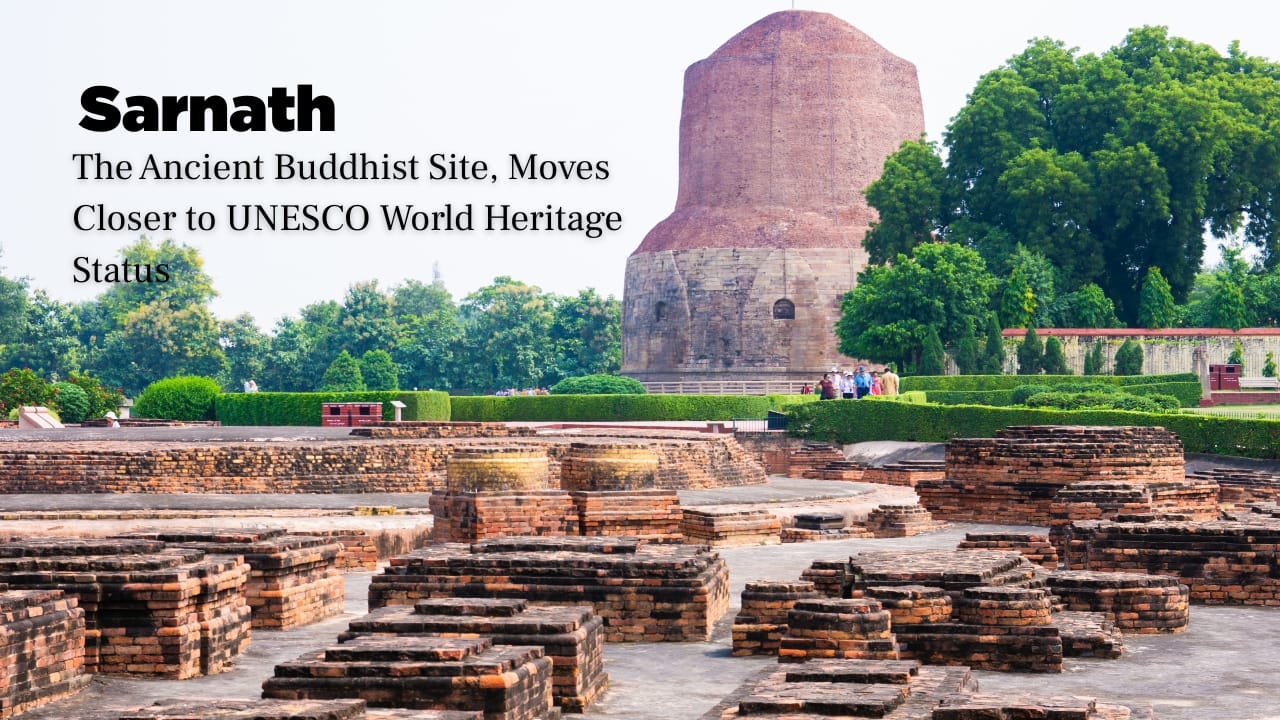Why in the News?
ASI will install a revised plaque at Sarnath, crediting Babu Jagat Singh (1787–88) for uncovering its archaeological importance, rather than British archaeologists.

About Sarnath:
- Location: Near Varanasi, Uttar Pradesh, at the confluence of the Ganga and Varuna rivers.
- Religious Importance: After enlightenment at Bodh Gaya, Gautama Buddha delivered the Dhammachakkappavattana Sutta (First Sermon) here in 528 BCE to five disciples, laying the foundation of the Sangha.
- Key Monuments:
-
- Dhamek Stupa (built c. 500 CE, 39 m high, 28 m diameter).
- Ashoka Pillar with Lion Capital (India’s national emblem) and Ashoka Chakra.
- Chaukhandi Stupa (Gupta era; octagonal tower added in Mughal period).
- Mulagandha Kuti Vihar with frescoes of Buddha’s life.
- Sarnath Archaeological Museum with the original Lion Capital and Buddhist sculptures.
- Archaeology: Excavations over 200 years, including B. R. Mani (2013–14), show Buddhist activity even before Ashoka.
- Holy Site: One of Buddhism’s Four Holy Places (others: Lumbini, Bodh Gaya, Kushinagar).
- Historic Role: By the 7th century CE, Sarnath hosted 30 monasteries and over 3,000 monks, flourishing under Mauryan, Kushan, and Gupta patronage.
Plaque Controversy and ASI Action:
- Current Plaque: Credits Mr Duncan and Col. E. Mackenzie (1798) for exposing Sarnath, followed by excavations by Cunningham, Kittoe, Oertel, Marshall, Hargreaves, and Sahni.
- Jagat Singh Claim: Descendant of Babu Jagat Singh (of Benares ruler Chait Singh’s family) petitioned ASI, arguing he first exposed Sarnath’s remains in 1787–88 during a digging exercise.
- ASI’s Response: ASI confirmed revision; a corrected plaque will be installed soon. Officials noted many pre-1861 plaques reflected British biases.
- Artifacts: Jagat Singh’s digging uncovered a casket with Buddha relics, now partly housed in the Asiatic Society, Kolkata.
Cultural Significance:
- UNESCO Nomination: Officially proposed for the World Heritage List (2025–26 cycle) after 27 years on the tentative list.
- Policy Context: India projects itself as the land of Buddha; recently issued notices to stop auctions of Buddhist relics abroad.
| [UPSC 2019] In which of the following relief sculpture inscriptions is ‘Ranyo Ashoka’ (King Ashoka) mentioned along with the stone portrait of Ashoka?
Options: (a) Kanganahalli* (b) Sanchi I (c) Shahbazgarhi (d) Sohgaura |
Get an IAS/IPS ranker as your 1: 1 personal mentor for UPSC 2024

